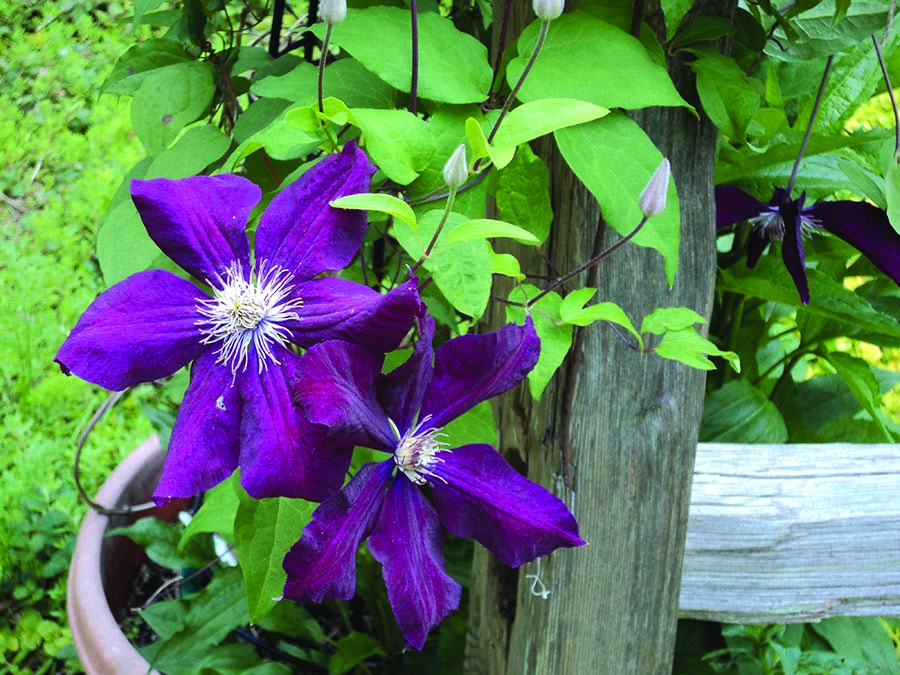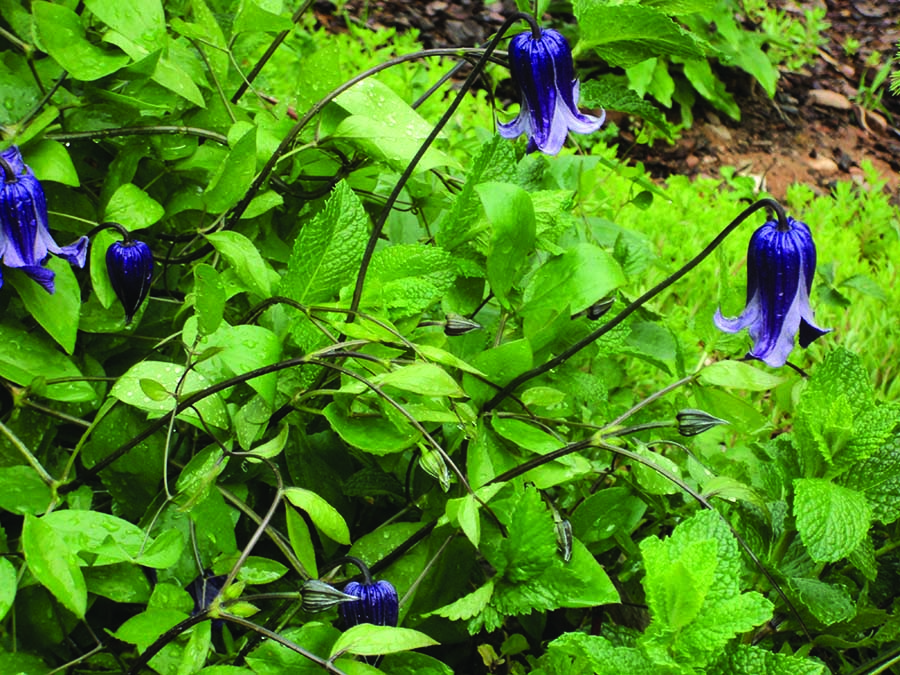Everyone loves clematis — at least it seems that way. They are one of those beautiful, spring flowering plants that welcomes you to the garden. And best of all, they are easy to grow.
But our early spring has been a challenge for them followed by cold days off and on, and now, extreme heat. This heat combined with humidity affects us and our plants as well. The clematis likes to grow in the sun but they like their roots to be cool and shaded. This extreme weather can weaken the plant and that can lead to wilt. Some clematis are very resistant to it but others are not. If you notice some browning on tips and young foliage and then the vines, remove the damage and drench the soil with a copper-based fungicide. Wilt won´t kill the plant. Your clematis will sprout again from leaf nodes below the soil.
The clematis is a climbing plant that can be trained to adorn many places in our gardens from mail boxes to fences to trellises even as a ground cover. One of my favorite ones and easy to grow is Nelly Moser pictured here growing around an old window that hangs on my kitty house with a caricature of me painted by a friend. And please, don´t ask about the kitty house for that is a story for another day! The clematis has various colors of flowers from white (Sweet Autumn) to red (Gravetye Beauty) or purple (Jackmanii) and even yellow (Golden). The flower shapes vary widely, including everything from nodding (Rooguchi) or upfacing bells (Duchess of Albany) to flat single (Comtesse de Bouchaud, my favorite) or double flowers with large fluffy centers (Josephine) in contrasting colors. Their vines range from 4 to 30 feet tall making them perfect on a trellis. If all these shapes and colors are not enough, most of these vines have fascinating fluffy seed heads to finish the season with style.
It is fairly easy to grow beautiful clematis. They like full sun to part shade. White, deep blue, purple and red hold their colors well in full sun. While pale blues, pinks and mauves tend to fade in too much light, so give these plants some afternoon shade. They like cool feet and consistent moisture, so top-dress with 3 to 4 inches of mulch, keeping the mulch 2 inches away from the stems. Apply all purpose, granular 10-10-10 fertilizer once a year after pruning or top dress with 2 inches of compost in spring. Since our soil is acidic and they prefer alkaline soil, I lime twice a year…spring and fall. (A rule of thumb is if the pH is too high (alkaline) or too low (acidic) the plant cannot absorb the nutrients that are available in the soil.) A good indication of acidic soil would be if you notice your clematis vines have become stunted…add lime to raise the pH. Be sure to use dolomite lime…high in calcium carbonate and magnesium carbonate.
Pruning is a little more detailed when it comes to clematis. Spring bloomers are pruned differently from summer bloomers and differently from re-bloomers. You can remove dead or damaged stems on all clematis at any time. Flowers that bloom in the spring grow on old wood. This group should be pruned before midsummer to allow next year’s blooms to set. Summer or fall flowering clematis should be done in early spring as these flower on current year’s growth. On re-bloomers you can deadhead spent flowers as another set of smaller flowers bloom on new growth. It is suggested that deadheading as much as 12 to 18 inches of stem from the last spent flower will rejuvenate the plant and this is often the best means of pruning clematis vines.
Why plant clematis? Nothing compares to the vertical display of the clematis in a garden with their beautiful color, extravagance of blooms and graceful habit as they vine their way around the garden. So, give them good soil, reasonable moisture, shade at their roots, and they will love you back in all of their splendor!♦




